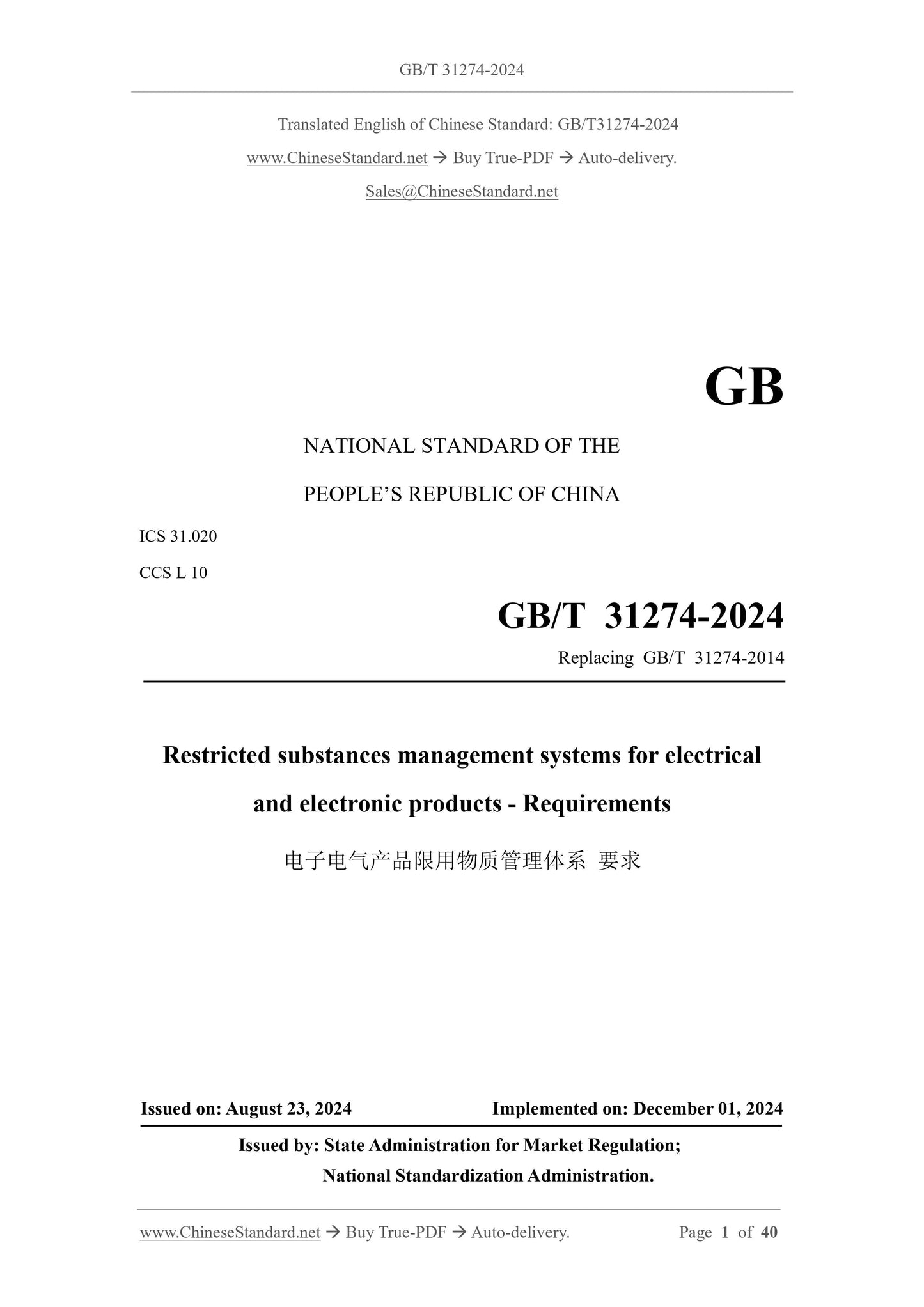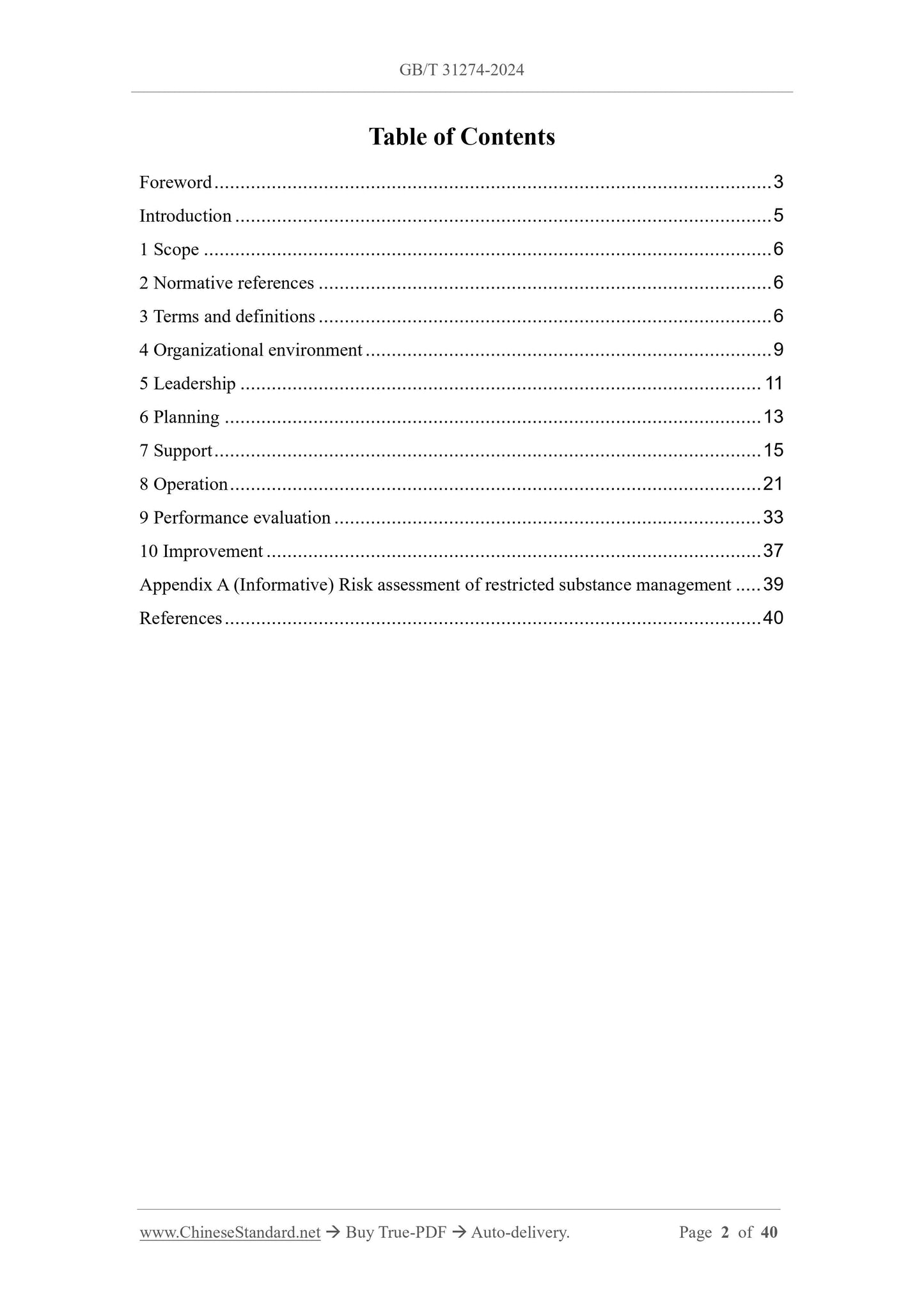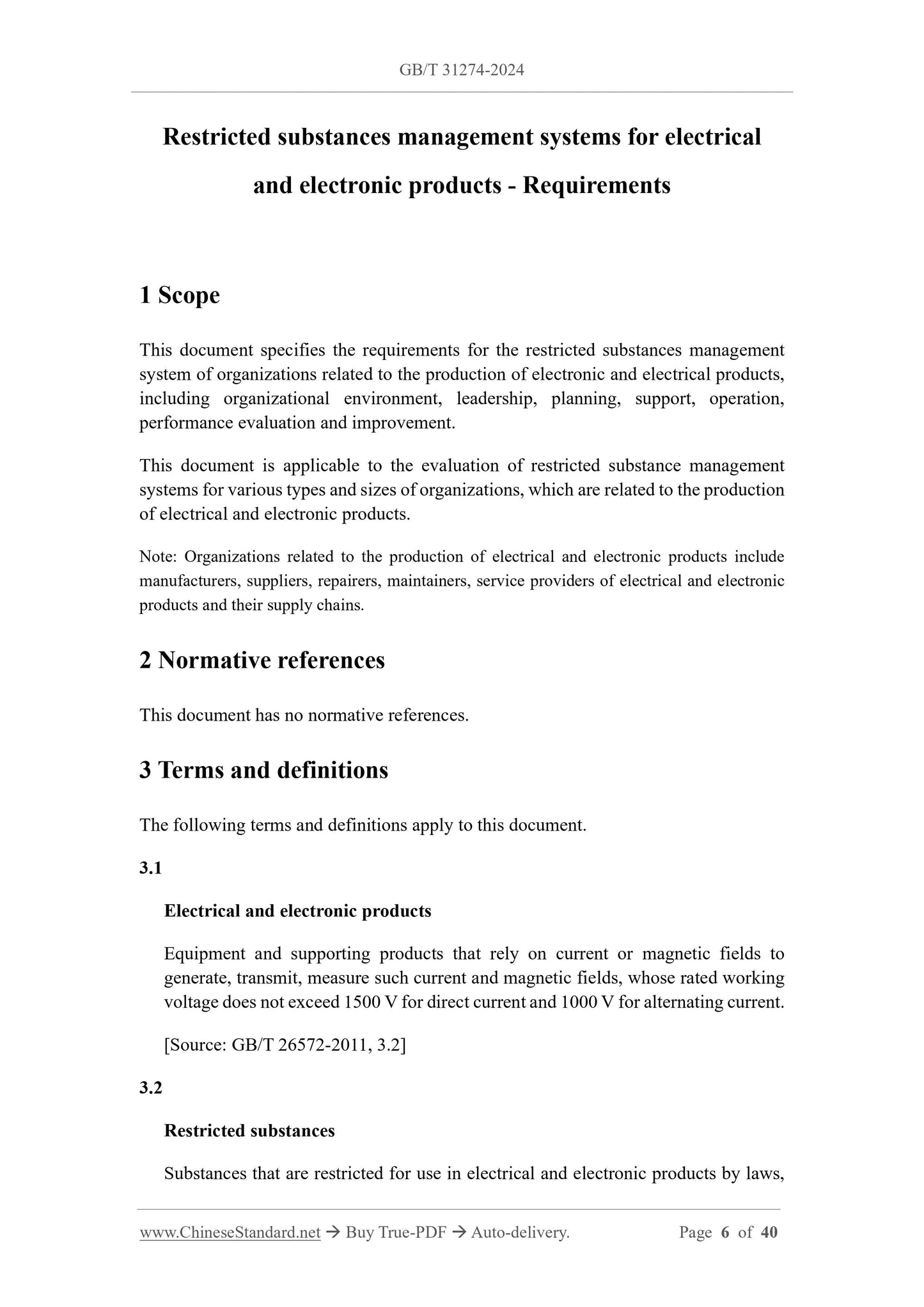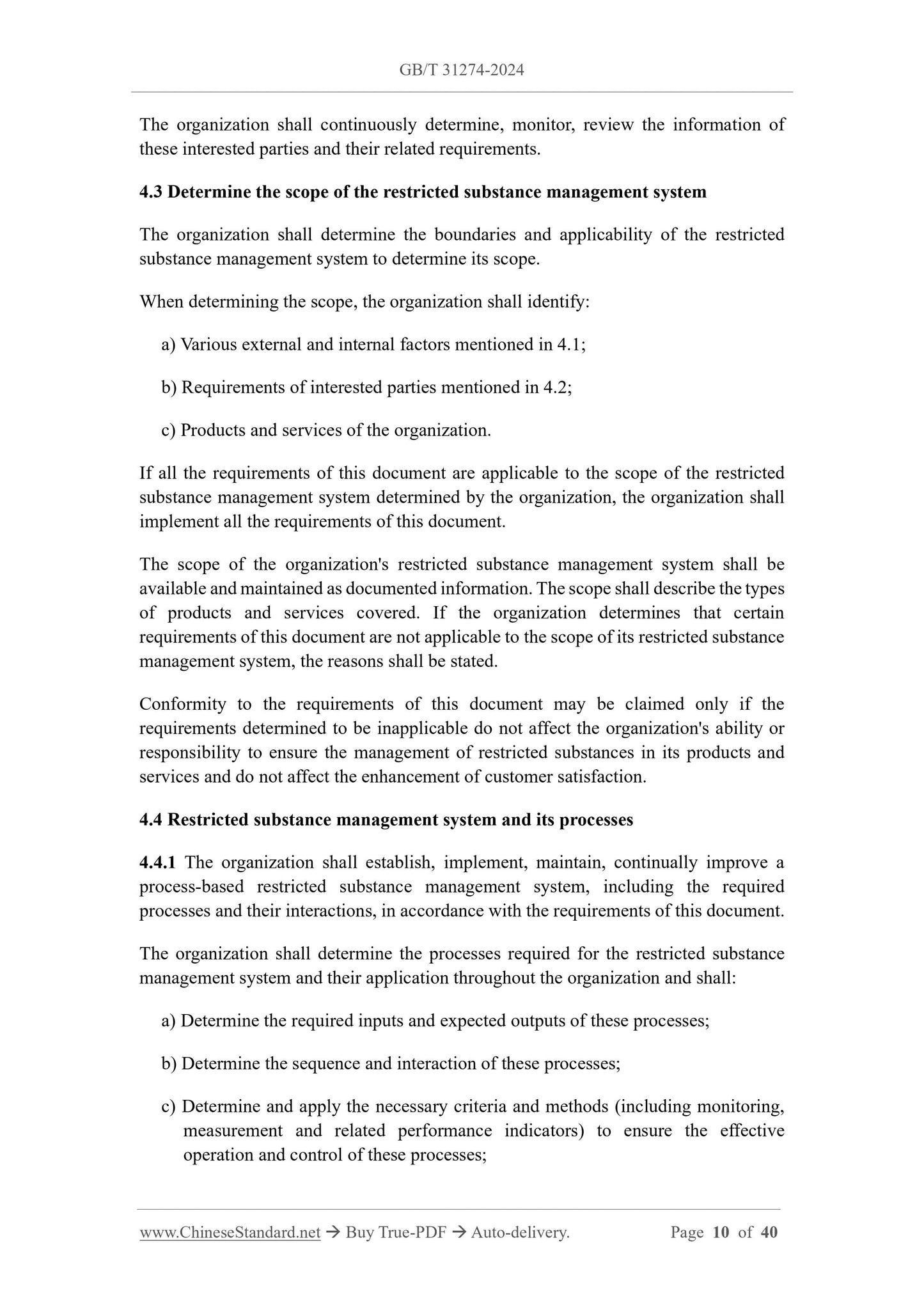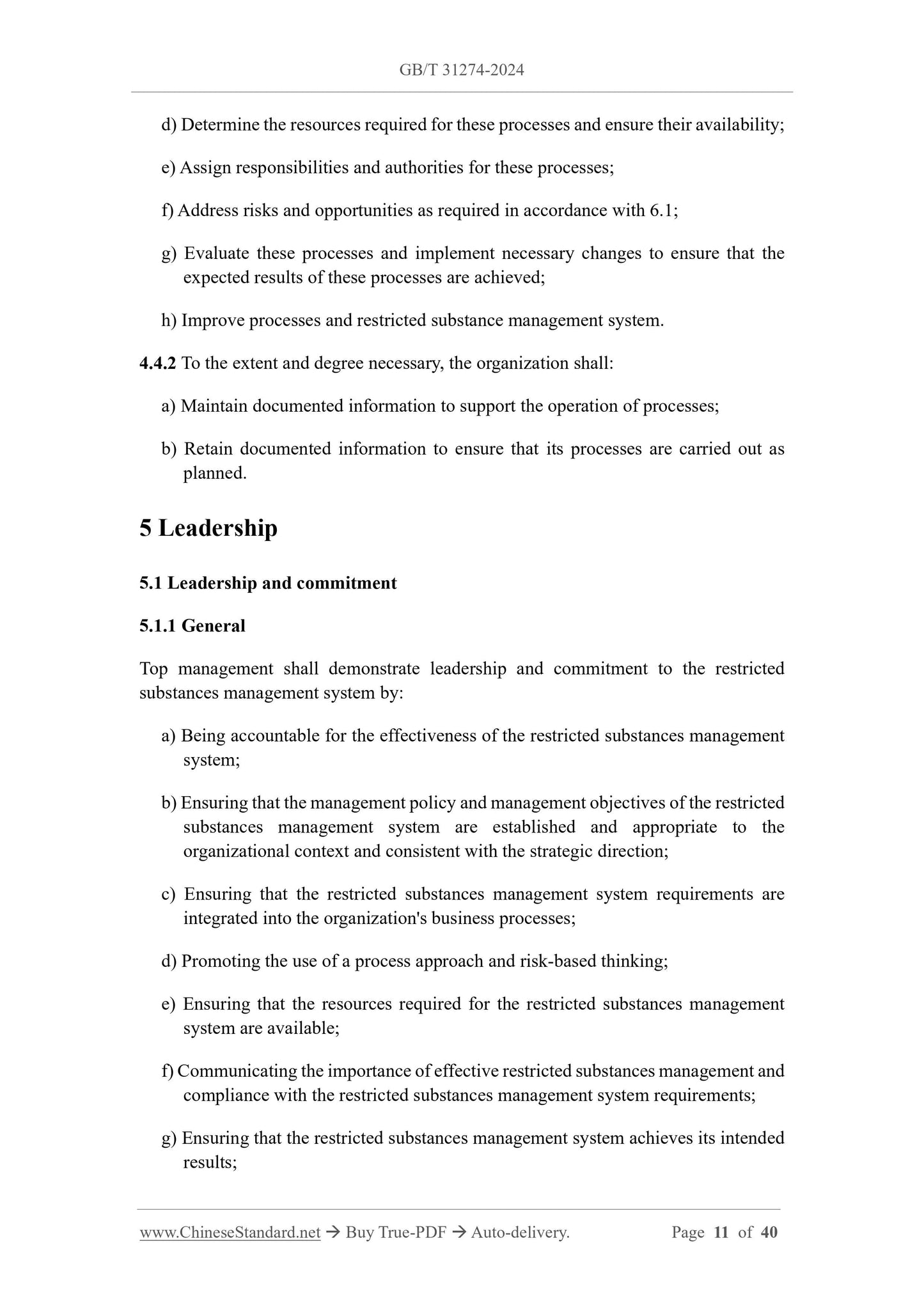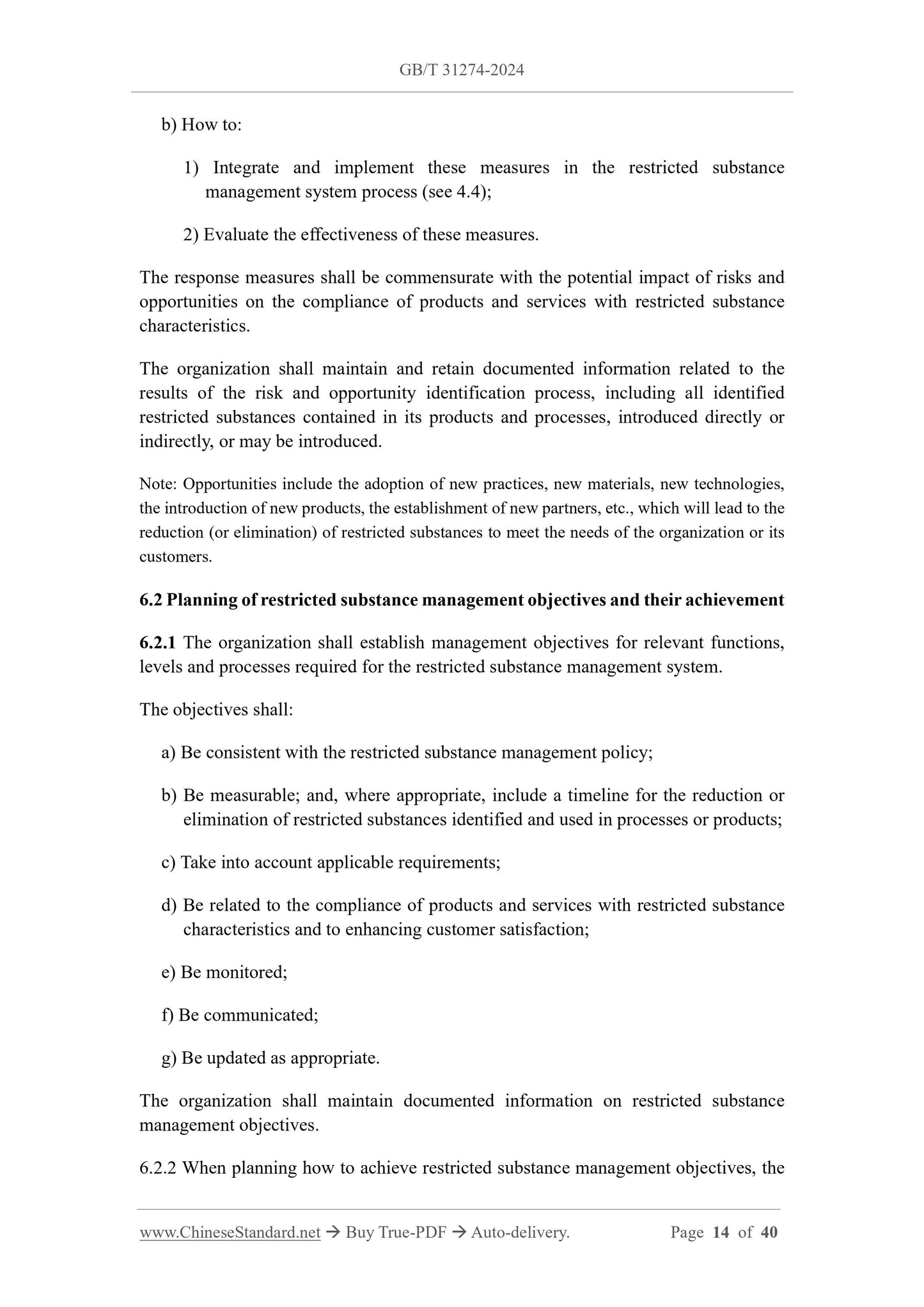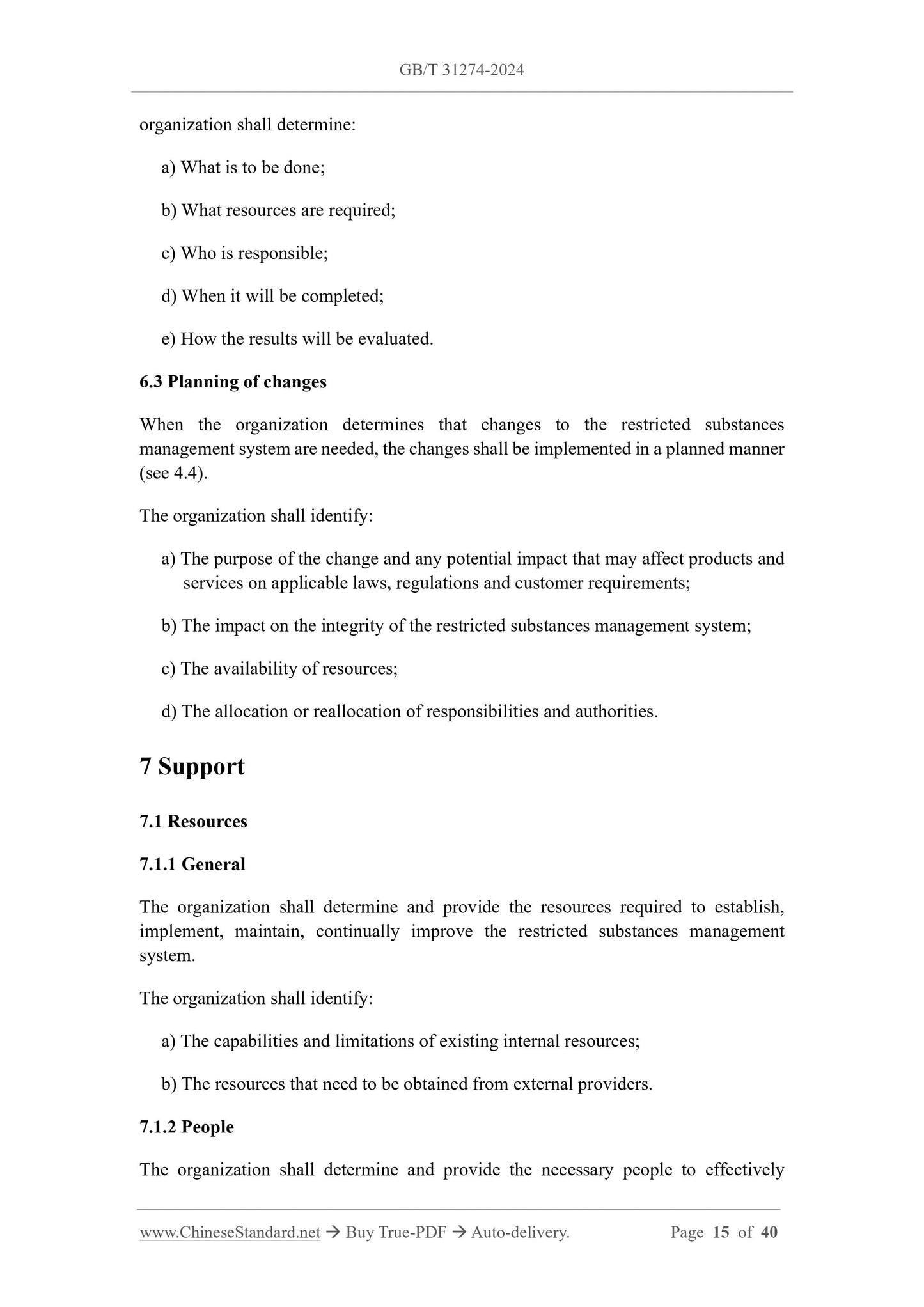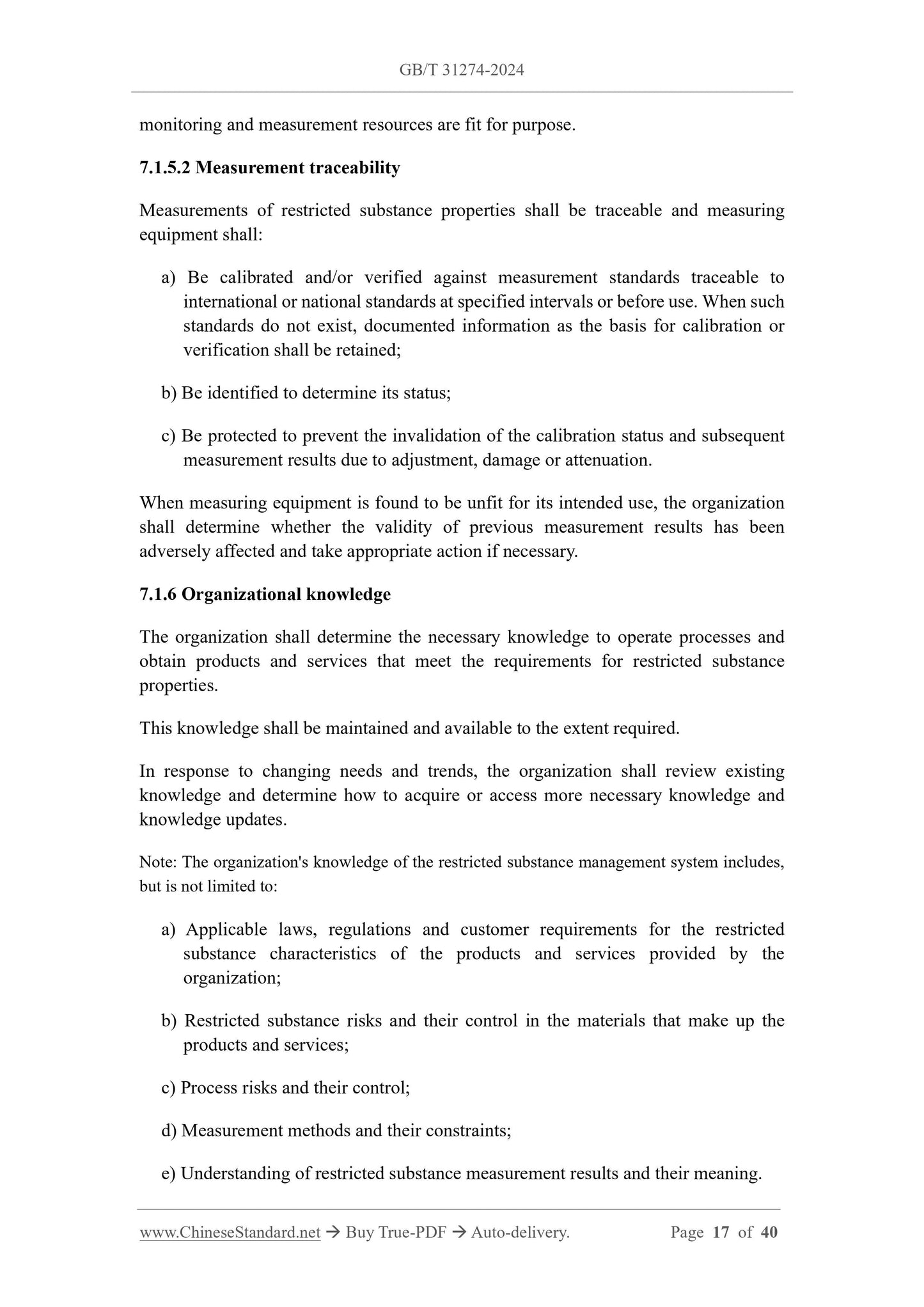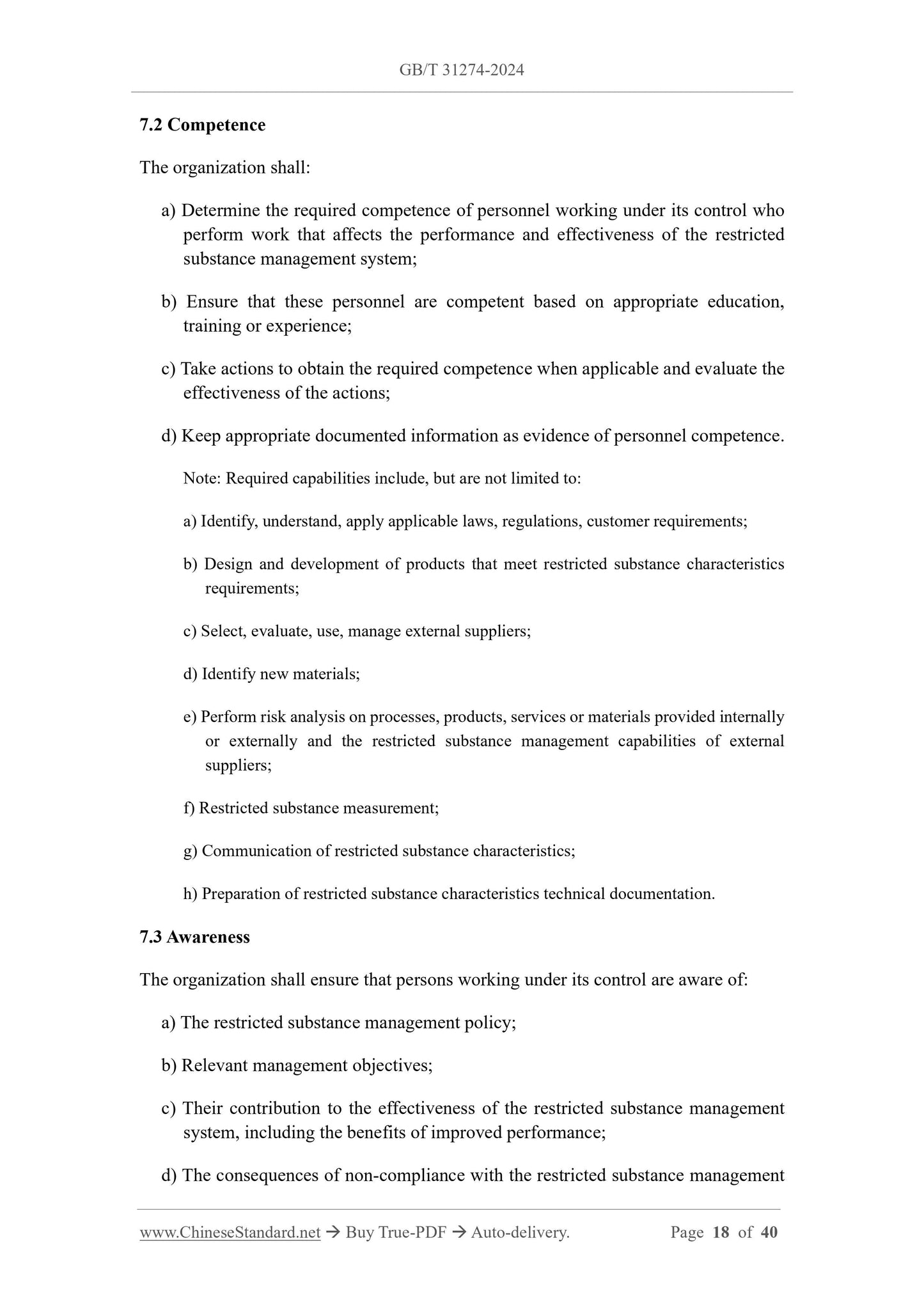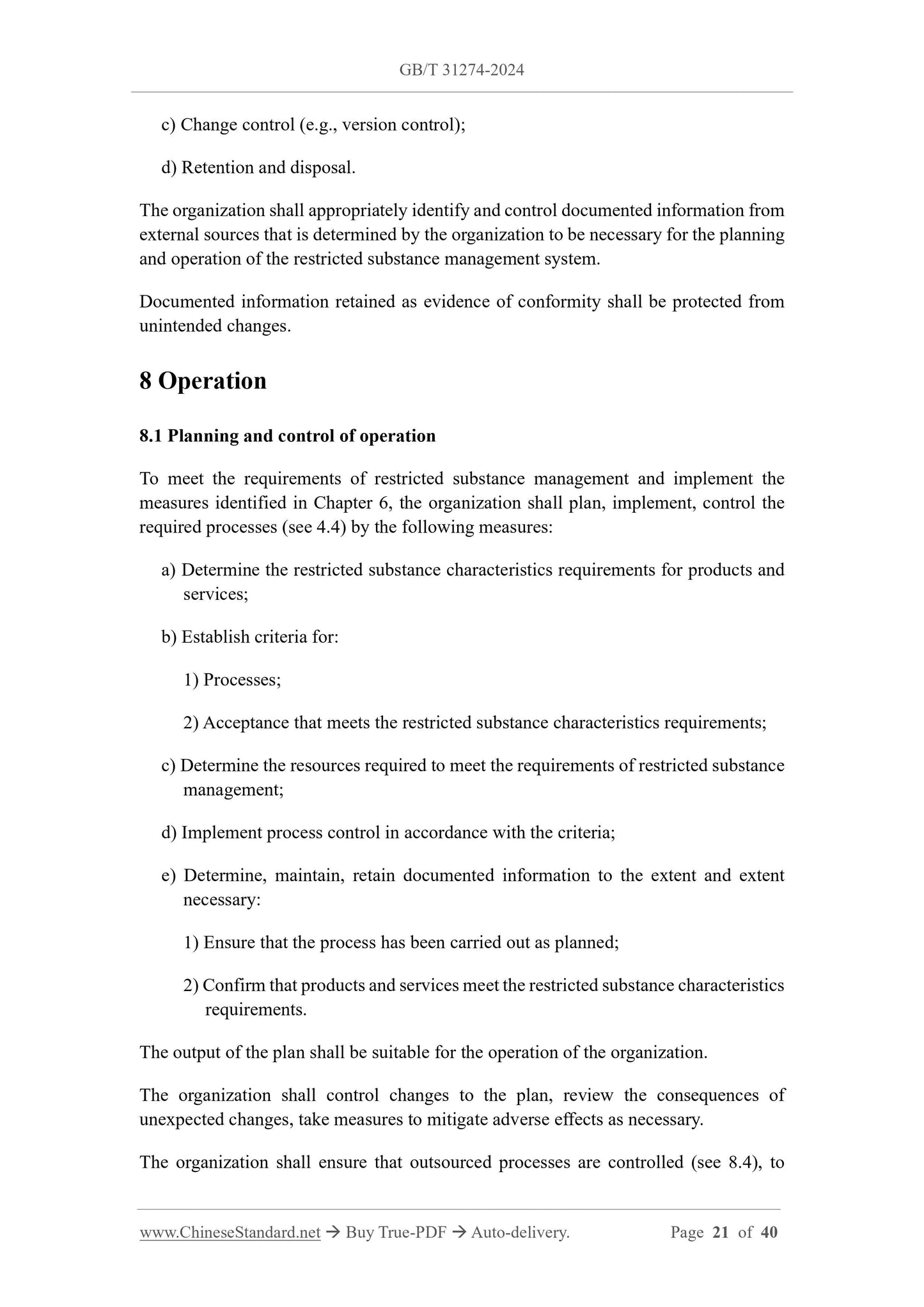1
/
of
12
www.ChineseStandard.us -- Field Test Asia Pte. Ltd.
GB/T 31274-2024 English PDF (GB/T31274-2024)
GB/T 31274-2024 English PDF (GB/T31274-2024)
Regular price
$440.00
Regular price
Sale price
$440.00
Unit price
/
per
Shipping calculated at checkout.
Couldn't load pickup availability
GB/T 31274-2024: Restricted substances management systems for electrical and electronic products - Requirements
Delivery: 9 seconds. Download (and Email) true-PDF + Invoice.Get Quotation: Click GB/T 31274-2024 (Self-service in 1-minute)
Newer / historical versions: GB/T 31274-2024
Preview True-PDF
Scope
This document specifies the requirements for the restricted substances managementsystem of organizations related to the production of electronic and electrical products,
including organizational environment, leadership, planning, support, operation,
performance evaluation and improvement.
This document is applicable to the evaluation of restricted substance management
systems for various types and sizes of organizations, which are related to the production
of electrical and electronic products.
Note. Organizations related to the production of electrical and electronic products include
manufacturers, suppliers, repairers, maintainers, service providers of electrical and electronic
products and their supply chains.
Basic Data
| Standard ID | GB/T 31274-2024 (GB/T31274-2024) |
| Description (Translated English) | Restricted substances management systems for electrical and electronic products - Requirements |
| Sector / Industry | National Standard (Recommended) |
| Classification of Chinese Standard | L10 |
| Classification of International Standard | 31.020 |
| Word Count Estimation | 28,273 |
| Date of Issue | 2024-08-23 |
| Date of Implementation | 2024-08-23 |
| Issuing agency(ies) | State Administration for Market Regulation, China National Standardization Administration |
Share
